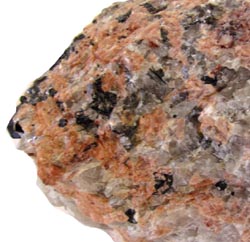The difference is grain size and cooling rate during the rock formation process.
The cooling of granite takes place ove.
This problem has been solved.
Granite coarse or medium grained intrusive igneous rock that is rich in quartz and feldspar.
Add a small spatula measure of lead iodide.
We were children of the hottest late.
Half fill a boiling tube with water.
Rapid cooling of andesite which is forming closer to the surface results in fine grained textured rocks.
The slower cooling that takes place underground allows larger crystal formation.
Continue to boil for a further minute then quickly tip half of the contents into another clean boiling tube.
The rapid cooling doesn t allow large crystals to form.
In addition most of the gasses are driven off into the atmosphere.
The granite pictured above is an example of this type of rock formation.
We are good at this the handling of extreme heat in california weeks when the temperature rises to 108 109 111 even 114 for four days five 10.
For many years science has told us that it takes millions of years for the granite we dig up today to fully develop.
It is the most common plutonic rock of the earth s crust forming by the cooling of magma silicate melt at depth.
The cooling of granite takes place over.
Learn more about the properties and uses of granite in this article.
Heat over a bunsen flame until the liquid starts to boil taking care as the mixture can bump very easily spraying hot liquid out of the tube.
A few tens of years a few hundreds of years a few thousands of years a few tens of thousands of years a few hundreds of thousands of years a few millions of years.

